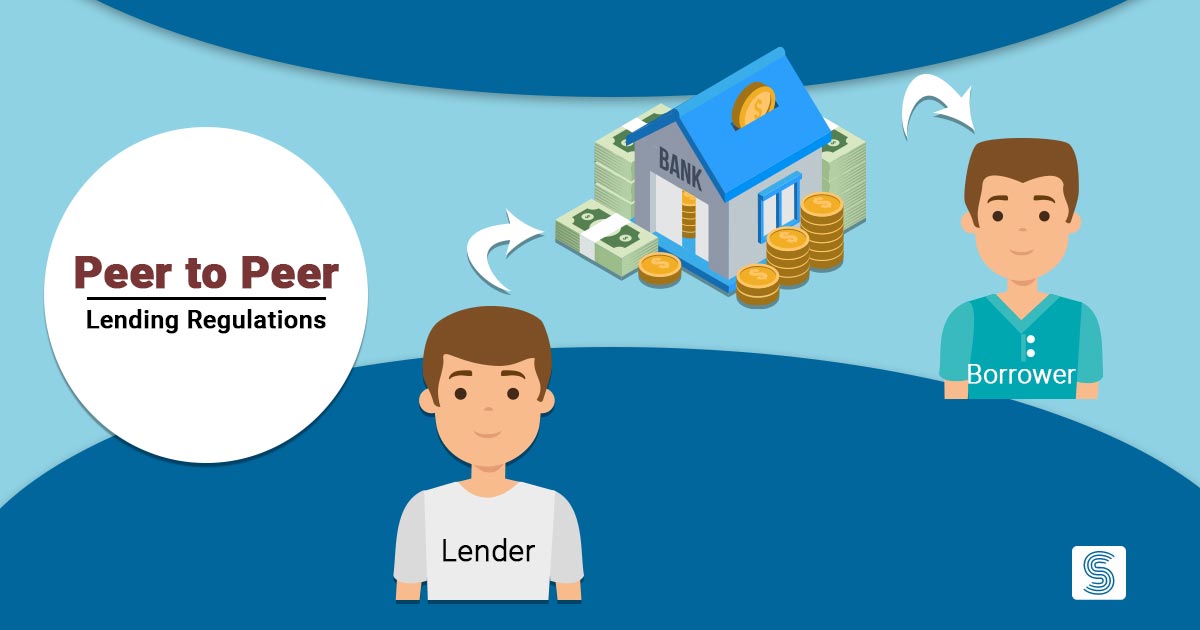RBI Comes Out With Numerous Solutions To Eliminate P2P Lending Issues & India’s Credit Woes

Monisha Chaudhary | Updated: Mar 02, 2019 | Category: Peer to Peer lending
The credit system has existed since the inception of trade and commerce. Its core concept remained the same, but related aspects have undergone several changes. The current international financial market is based on the flow of cash, and much of it is done on a credit basis. Though there was no shortage of traditional money lending agencies, the need for something technologically complacent was felt. The time was ripe for the establishment of ‘peer-to-peer’ or P2P lending companies. Unlike traditional money lending organizations, these companies have virtual representation. If you do not possess much information about this new technology-driven credit market, then this write-up will come in handy.
Table of Contents
What is peer-to-peer lending?
A lot has been written about the traditional credit issuance procedure, where the borrower had to approach the creditor. Though only registered financial institutes have the power to issue the credit to interested parties, for personal or commercial purpose, there was a considerable credit black market racket that operated simultaneously. Adding to the two, we now have another lending system that would not have been possible without the development of IT in India. This latest addition is called peer-to-peer lending license or P2P lending. This system also has two parties – the moneylender and the borrower. The only difference is that the entire transaction, starting from the request for credit to the sanction certificate, all happens on the virtual platform.
Yes! The main feature of P2P lending is that the entire system is operated online. The lenders have their websites. Any candidates, interested in borrowing money can log in on the portal, fill up some forms and apply for the money. Though the P2P borrowing system was in full swing in countries like UK, US, Australia, Brazil, New Zealand, Canada, and other nations, it gained popularity in India only recently. The financial market in India is overseen by RBI. Earlier, online companies which were involved in money lending activities were not recognized by RBI. But recently, the Reserve Bank of India has published certain regulations, which will stabilize and legalize the entire plethora of operations.
Advantages of peer-to-peer lending
As online money lending and borrowing process are not widespread, many may not have head or tail about the concept. The following are some salient features of the virtual money lending business:
1. Fast and easy approval rate
The main issue with the traditional credit system is it is rather complex and time-consuming. The banks often shy away from issuing loans to people with low credit score. Additionally, many fail to receive the credit due to documentation errors. With online credit system, one can do away with these problems quickly.
2. Low-interest rates
Banks and other independent financial institutes charge high-interest rates on the money they lend. It often poses an issue for the borrowers. With the peer-to-peer lending platform, you will no longer have to worry about this. The online money lending platform has lower interest rates. The payment procedure is also flexible, and will not upset your monthly budget.
3. Easy for all
If you are looking for something that is not on the conventional lines, then it is best to opt for peer-to-peer lending process. A quick comparison with the other forms of borrowing suggests that people from all sections of the society will be able to enjoy the benefits of the scheme.
4. Free to invest in any business
There is no lamination on where the client desires to spend the borrowed amount. The RBI guidelines[1] have paved the path for the legalization of the online money lending agencies. This legal seal will open other avenues for the investment of this money.
5. No additional charges
Clients need to pay many additional costs if they take the credit from the banks. Apart from the application charges, clients need to pay a processing fee, taxes, and insurance charges. With the online credit application and approval platform, one need not worry about these aspects.
6. Paperless process
Traditional money lending procedure includes tons of paperwork. A layman hardly has the skills and experience to take care of these. Any mistake in the documentation will lead to the cancellation of the application. With P2P lending, interested borrowers will be able to communicate with lenders via the virtual portal. All application documents are available in digitized format. Applicants can fill in these documents online and enrol by clicking on the “submit” option. The online enrollment procedure has not only made registration less time consuming but also paperless.
7. High tax efficiency
With the approval of the RBI, clients will also be able to attain tax benefits on the borrowed money, provided they fulfill all requirements, laid down by RBI.
8. No need to worry about risks
Online money lending companies, which have a formidable presence in the P2P platform proudly suggest that their clients never lost their monetary investments. Some of these agencies also offer adequate coverage in case the client loses the investment.
What is RBI’s role in simplifying the credit market?
The Reserve Bank of India takes all decisions, which govern the operation of national as well as private banks. If any private financial organization desires to do business on Indian soil, then it will require certification from RBI. Earlier, this apex financial body was not in favor of the P2P lending system. However, after much deliberation and in-depth analysis, the Governor of the RBI has decided to legalize the activity of these online credit companies. The authority took this historic decision in October 2017. As per the Non-Banking Financial Company – Peer to Peer Lending Platform (Reserve Bank) Directions, 2017, these online companies will be termed so forth NBFCs or Non-Banking Financial companies.
Economists opine that this decision will ensure the growth of the money market and eliminate some issues, which loom large. The RBI will regulate the operations of the peer-to-peer lending companies. It will not only put a legal stamp on the monetary transfers but will also prevent suspicion from the minds of commoners. The inflow of cash through the online credit companies add to the progress of the Indian financial market. We expect that it will pave the path for good news not only for the lenders and borrowers but for the entire economic sector.
Regulatory guidelines announced by RBI
- Only those P2P lending organizations will be able to operate, which fulfill the necessary criterion, laid down by the Reserve Bank of India and Indian Law. These companies must attain Certificate of Registration if they desire to expand their base in the Indian credit market.
- The companies will not be allowed to function until they incorporate in the nation. Apart from this, they will have to submit papers, which highlight that they have the necessary entrepreneurial, managerial, and technological resources.
- These companies will be able to start their operations once they submit their tech plans and get a clean chit from the IT Development department of the Indian government.
- No NBFC will have the power to lend funds without the presence of another participant. If the government finds out that the company sends or receives cash overseas, then the activities will be terminated immediately.
- Preservation of client data is another rule that these companies will have to follow. It is mandatory for the agencies to store these details on the hardware that is stationed in the country.
- It will be the responsibility of the NBFC to measure the repayment capabilities of the borrower. Whether the risks are high or low, the company must divulge the information to the interested lending party.
- The company must gather all necessary documents from the interested borrower. It must send a copy of all such documents to the lending party.
Conclusion
We can say that for the formation Peer-to-peer lending company or obtaining P2P license, one is required to follow the RBI guidelines strictly. RBI not only governs all banks but every big financial institution that operates in the country. Operating any financial organization without RBI approval can cost companies a hefty penalty or can even put the owners behind the bars. Hence, such companies are highly recommended to follow the RBI guidelines. Doing this will eliminate lending issues and will bring various benefits to the organization.
This write-up will be an eye-opener for many organizations, which have vested interest in related sectors. However, beginners may stumble at several points. For a better understanding, you can consult with qualified experts. Swarit Advisors has been working in money related sector for long. The certified consultants are aware of all the alterations, taking place in the recent financial sector. They will come to your rescue and answer all your queries. Additionally, they also offer professional assistance at affordable rates, which will release all burdens from your shoulders.
Also, Read: Advantages and Disadvantages of P2P Lending in India














